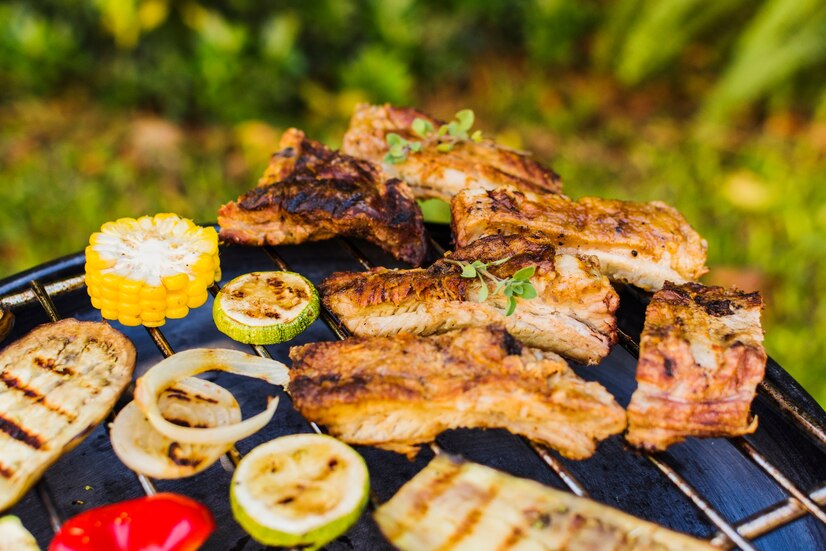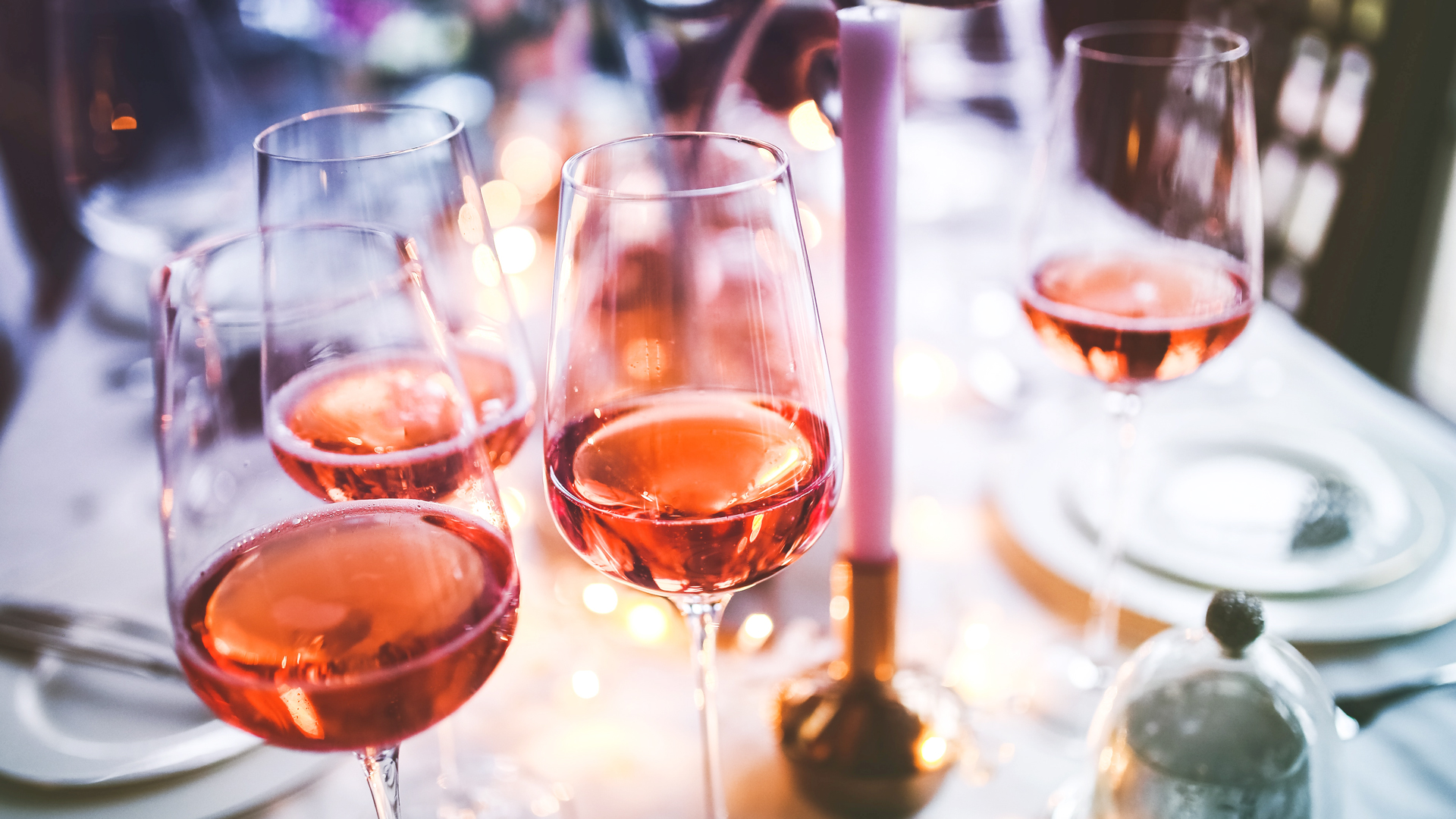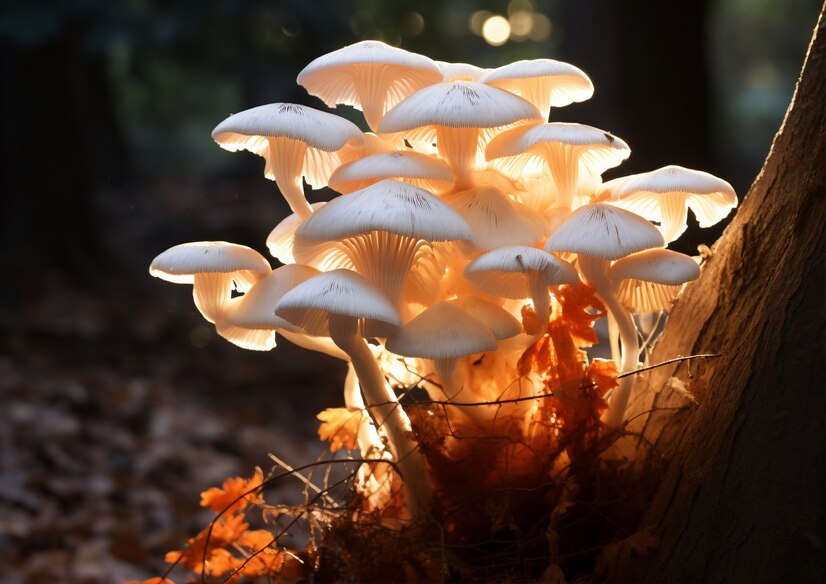FOOD
Up the Grill with Argentine BBQ Recipes

Imagine the sun slipping behind the pampas, lighting up the sweeping, untainted territory of Argentina with a warm, brilliant light. The discuss is filled with the alluring scent of meat cooking and the hearty fragrance of wood being burned. The inspiring gathering of cherished ones around a cozy fire, where they trade stories, gaiety, and, over all, a rich supper, could be a cherished convention. Typically a merry event that respects life, culture, and community.
We are going set out on a flavorful journey into argentinian grilled meat recipes. You’ll learn how to ace the craftsmanship of grilling like an Argentine, from selecting the finest cuts of meat to culminating the quintessential Argentine BBQ sauce formula. Whether you are a prepared barbecue ace or a patio BBQ devotee, these Argentina BBQ formulas and techniques will hoist your flame broiling amusement to modern statures.
Essential Ingredients and Hardware
To really encounter the enchantment of Argentine BBQ, you’ll ought to begin with the correct fixings and hardware. Here’s a comprehensive direct to the basics you’ll ought to make an bona fide Asado at domestic.
Key Ingredients
- Beef Cuts
- Ribs (Costillas de Res): These are the star of any Argentine BBQ. The ribs are cooked gradually over a moo fire to realize a delicate and flavorful result.
- Flank Steak (Vacio): This cut is known for its wealthy, bulky flavor and is regularly marinated some time recently barbecuing.
- Brief Ribs (Tira de Asado): Brief ribs are another favorite, cooked so also to the hamburger ribs, giving a succulent and savory taste.
- Chorizo and Morcilla (Blood Sausage)
- Chorizo: These sausages are spiced with paprika and garlic, including a burst of flavor to your BBQ spread.
- Morcilla: Blood sausage may be a conventional component of Asado, offering a one of a kind and wealthy taste that sets well with flame broiled meats.
- Provoleta (Barbecued Cheese)
- Provoleta: This Argentine cheese is flame broiled until it softens and creates a fresh, brilliant hull. It’s regularly served with a sprinkle of oregano and a drizzle of olive oil.
- Chimichurri Sauce Fixings
- Parsley: New parsley is the base of this famous sauce.
- Garlic: Includes a impactful kick to the chimichurri.
- Vinegar: Ruddy or white wine vinegar gives the fundamental sharpness.
- Olive Oil: Ties the fixings together.
- Extra Herbs and Flavors: Oregano, ruddy pepper pieces, and salt complete the blend.
Equipment
- Asado Flame broil (Parrilla)
- The Parrilla could be a expansive barbecue that permits for cooking different cuts of meat at distinctive temperatures. It regularly has flexible grates to control the separate from the fire.
- Firewood or Charcoal
- Firewood: Conventional Asado employments hardwood like oak or quebracho, which confers a particular smoky flavor to the meat.
- Charcoal: Protuberance charcoal is an worthy elective, advertising a consistent and hot fire.
- Barbecue Instruments
- Tongs: Long-handled tongs are basic for turning and moving meat without burning yourself.
- Brush: A flame broil brush makes a difference keep the grates clean some time recently and after cooking.
- Meat Thermometer: Discretionary but useful for guaranteeing meat is cooked to the required level of doneness.
By gathering these key fixings and fundamental gear, you will be well on your way to making an extraordinary Argentine BBQ encounter. Up following, we’ll dive into the methods and tips that will assist you idealize your Asado abilities.
Strategies and Tips for Perfect Asado
Acing the craftsmanship of Argentine BBQ (Asado) includes more than just having the right fixings and hardware. Here are the fundamental methods and expert tips to offer assistance you accomplish flawlessness on the flame broil.
Building the Fire
- Choosing Your Fuel
Firewood: Utilize hardwood like oak or quebracho for a traditional smoky flavor. Dodge softwoods, which burn as well rapidly and deliver as well much smoke.
Charcoal: Knot charcoal is favored over briquettes for its characteristic composition and reliable warm.
- Starting the Fire
Firewood: Arrange the wood in a pyramid shape and light little igniting underneath. Once the igniting catches, add larger pieces of wood continuously.
Charcoal: Utilize a chimney starter for indeed lighting. Fill the chimney with charcoal, put folded daily paper underneath, and light it. Once the charcoal is secured in white fiery remains, it’s prepared.
- Managing the Fire
Temperature Control:
Alter the fire by moving coals around or including more wood as needed. The objective is to preserve a consistent, direct warm for moderate cooking.
Heat Zones:Make diverse warm zones on your barbecue. Orchestrate more coals on one side for tall warm (coordinate flame broiling) and less on the other for low warm (circuitous flame broiling).
Cooking Methods
- Direct vs. Indirect Heat
Direct Heat: Put the meat straightforwardly over the coals for burning and cooking more slender cuts. This strategy is best for frankfurters, more slender steaks, and provoleta.
Indirect Heat: Position the meat absent from the coals, permitting it to cook gradually and evenly. This strategy is perfect for bigger cuts like ribs and flank steak.
- Slow Cooking Strategies
Low and Slow:
Cook large cuts of meat at a low temperature for an expanded period. This strategy guarantees delicacy and allows the flavors to create completely.
Patience:
Argentine Asado is around getting a charge out of the method. Dodge hurrying the cooking time. Let the meat cook slowly to accomplish the finest results.
- Proper Way to Turn Meat
Negligible Turning:
Turn the meat as it were once or twice amid cooking. Constant flipping can cause the meat to lose its juices and dry out.
Using Tongs:
Use tongs rather than a fork to turn the meat. Puncturing the meat with a fork can cause the juices to escape, leading to a drier result.
H3: Tips from the Pros
Rest the Meat
After evacuating the meat from the barbecue, let it rest for many minutes some time recently slicing. This allows the juices to redistribute, coming about in a juicier and more flavorful chomp.
Season Basically
Argentine grill aces frequently utilize as it were coarse salt to season the meat. The quality of the hamburger talks for itself, and basic seasoning enhances the natural flavors.
Master the Chimichurri
Naturally made chimichurri sauce is a staple of Asado. Make it in development to let the flavors meld, and continuously serve it alongside your barbecued meats.
Appreciate the Method
Asado is as much almost the social involvement because it is about the food. Appreciate the time spent with friends and family, sharing stories and making memories around the grill.
By taking after these procedures and tips, you will be well on your way to acing the craftsmanship of Argentine Asado, bringing the wealthy flavors and conventions of Argentina to your possess patio BBQ. Next, let’s plunge into a few classic Argentine BBQ formulas that will awe your visitors and fulfill your taste buds.
If you gained new insights from this article, be sure to explore our blog for more enlightening content.
FOOD
Ever heard of the Baby Food Autism Lawsuit? Read All About it Here!

Recent reports have raised alarm over the presence of heavy metals like lead, arsenic, and mercury in baby food products, sparking widespread concern among parents. These contaminants have been linked to serious health risks, including developmental disorders such as autism.
In response, numerous lawsuits have been filed against major baby food companies, alleging negligence and demanding stricter safety standards. If you are seeking representation, it is crucial to consult the best product liability attorneys to navigate the complexities of these legal battles effectively.
Legal representation aside, it also helps to stay updated on the current status of the lawsuit. Dedicated lawsuit websites help in this regard. Lawsuit Legal News is one such website that contains everything you need to know about class action lawsuits in the US. The pages are also updated regularly to make sure plaintiffs or the general public know the current status of the class action lawsuit.
This article aims to provide a comprehensive overview of the ongoing baby food lawsuit and how parents can protect their children from potential harm.
The Rise of Baby Food Lawsuits
The baby food lawsuits began gaining attention in March 2021 after a shocking Congressional report revealed high levels of heavy metals in many popular baby food brands. This report sparked concern among parents and led to a wave of legal actions against baby food manufacturers.
Since the report’s release, around 60 lawsuits have been filed by parents who believe their children’s health has been harmed by these contaminated products. The lawsuits target major baby food companies, accusing them of negligence and failure to ensure the safety of their products.
Some of the early cases were dismissed due to a lack of evidence directly linking the heavy metals to specific health issues in children. However, the growing number of lawsuits highlights the widespread concern and demand for accountability from these companies.
What are the Allegations?
The lawsuits allege that baby food companies knowingly sold products contaminated with high levels of heavy metals, including lead, arsenic, cadmium, and mercury. These contaminants have been found in a variety of baby foods, including rice cereals, purees, and snacks.
Exposure to these heavy metals has been linked to serious health issues such as cancer, organ damage, and developmental disorders like autism. Parents claim that their children have suffered from these health problems after consuming these contaminated products.
Science and the Lawsuit
While there is no definitive evidence linking heavy metal exposure to autism or other developmental disorders, numerous studies have found a correlation between exposure to these contaminants and negative health effects.
For example, a 2020 study by Healthy Babies Bright Futures found that nearly all baby foods tested contained at least one heavy metal. Additionally, the report stated that long-term exposure to high levels of these metals can lead to serious health problems in children.
Despite this strong scientific evidence, proving a direct link between contaminated baby food products and specific health issues in children may be challenging in court. This is where experienced product liability lawyers can help build a strong case and fight for justice on behalf of affected families.
Current Status of the Lawsuits
As the lawsuits continue to gain momentum, baby food companies are facing increasing pressure to address these concerns and take action to ensure the safety of their products.
In response, some manufacturers have announced plans to reduce heavy metal levels in their products over time. However, many parents are calling for immediate action and stricter safety standards.
The lawsuits are still ongoing, with no clear resolution in sight. It is essential for parents to stay informed about any updates or developments in this legal battle and consult an attorney if they believe their child has been affected by contaminated baby food products.

What Parents Can Do
As the lawsuits continue to unfold, parents can take some steps to protect their children from potential harm. These include:
- Being cautious when introducing new foods into their baby’s diet and opting for organic or homemade options whenever possible.
- Staying updated on any product recalls or safety warnings issued by the FDA or individual manufacturers.
- Keeping an eye out for any symptoms of heavy metal exposure in their child, such as developmental delays, irritability, and digestive issues.
- Seeking medical attention if they suspect their child has been exposed to heavy metals and documenting any potential health issues.
Ultimately, it is the responsibility of baby food companies to ensure the safety of their products. However, parents can also take proactive measures to protect their children from potential harm.
FOOD
Brosé: The Rise of Rosé for Men and the Culture Behind It

Introduction
Move over, beer and whiskey—there’s a new drink in town, and it’s pink! Brosé, the playful term for rosé wine embraced by men, is more than just a fad. It’s a cultural shift that challenges traditional gender norms and celebrates the universal appeal of this delightful wine. So, what exactly is brosé, and why are men all over the world raising their glasses to it?
What is Brosé?
Brosé is simply rosé wine enjoyed by men, breaking away from the outdated notion that pink drinks are only for women. This trend celebrates the versatility and refreshing nature of rosé, making it a staple at summer gatherings, rooftop parties, and casual get-togethers. Unlike traditional rosé, which has often been marketed towards women, brosé is all about inclusivity and enjoying good wine without stereotypes.
History of Rosé Wine
Rosé wine has a rich history that dates back thousands of years. Originating in the Mediterranean regions, it was one of the earliest forms of wine produced. Over the centuries, rosé has evolved, gaining popularity in regions like Provence, France, known for its high-quality pink wines. In recent years, rosé has seen a surge in popularity, transcending cultural and gender boundaries.
The Emergence of Brosé
The brosé trend began gaining traction in the mid-2010s, coinciding with the rise of social media and lifestyle influencers. Events like National Rosé Day and popular culture references helped catapult rosé into the spotlight, with men increasingly joining the rosé revolution. Influential figures and celebrities, such as rappers and actors, openly enjoying rosé have also played a significant role in normalizing the trend.
Why Men are Embracing Rosé
Men are embracing rosé for several reasons. Firstly, it’s a refreshing and versatile wine that pairs well with various foods and occasions. Secondly, the shift towards more open and inclusive gender norms has encouraged men to enjoy rosé without fear of judgment. The pink wine’s light and crisp profile make it an excellent choice for warm weather and casual settings, further adding to its appeal.
Marketing and Branding
The marketing of brosé has been key to its success. Brands have cleverly targeted male consumers with bold, masculine packaging and campaigns that highlight the wine’s sophistication and versatility. Taglines like “Real men drink pink” and endorsements from male celebrities have further helped in rebranding rosé as a drink for everyone.
The Social Aspect of Brosé
Brosé has become a social phenomenon, prominently featured at parties, beach outings, and barbecues. Social media platforms like Instagram and TikTok have amplified the trend, with hashtags like #brosé and #roséallday showcasing men enjoying their favorite pink wine. This social aspect has helped foster a community of brosé enthusiasts who share their experiences and recommendations online.
Brosé and Food Pairing
One of the joys of rosé is its versatility in food pairings. Brosé pairs exceptionally well with a variety of dishes, from light salads and seafood to grilled meats and spicy cuisines. Its acidity and fruity notes complement a wide range of flavors, making it a perfect match for almost any meal.
Brosé Festivals and Events
Brosé-themed festivals and events have sprung up around the world, celebrating this beloved wine. Events like the La Nuit en Rosé festival in New York and the Rosé Mansion in Los Angeles offer immersive experiences for rosé lovers, complete with tastings, food pairings, and live entertainment. These events highlight the communal and festive nature of brosé culture.
Brosé in Pop Culture
Rosé has made its mark in pop culture, with numerous references in movies, music, and TV shows. Celebrities often share their love for rosé on social media, further embedding it into popular culture. From music videos to lifestyle blogs, brosé is frequently featured as a trendy and sophisticated choice.
Health Benefits of Rosé
Moderate consumption of rosé, like other wines, may offer certain health benefits. Rich in antioxidants, rosé can contribute to heart health and reduce inflammation. Its lower calorie content compared to other alcoholic beverages also makes it a more health-conscious choice for those watching their intake.
How to Choose a Good Rosé
Selecting a quality rosé can enhance your brosé experience. Look for wines from reputable regions known for their rosé, such as Provence, France. Check the vintage and opt for recent years to ensure freshness. Recommendations from wine experts and sommeliers can also guide you in choosing a rosé that suits your palate.
DIY Brosé Cocktails
Brosé isn’t just for sipping straight—it also makes a fantastic base for cocktails. Popular brosé cocktails include frosé (frozen rosé), rosé sangria, and rosé spritzers. These refreshing drinks are perfect for summer gatherings and add a creative twist to your rosé experience. Experiment with fruit garnishes, herbs, and even a splash of spirits to create your own signature brosé cocktail.
The Future of Brosé
The brosé trend shows no signs of slowing down. As societal norms continue to evolve and the appreciation for rosé grows, we can expect to see even more innovative products and events centered around brosé. The future holds exciting possibilities for new rosé varieties, creative marketing strategies, and expanded acceptance of this delightful wine.
Conclusion
Brosé represents a significant cultural shift towards inclusivity and breaking down gender stereotypes in the world of wine. Its rise in popularity highlights a growing appreciation for rosé’s unique qualities and the joy of sharing good wine with friends, regardless of gender. As brosé continues to make its mark, it promises to remain a beloved part of social and culinary experiences.
FAQs
- What exactly is brosé?
Bro-sé is a playful term for rosé wine that is enjoyed by men, challenging the stereotype that pink drinks are only for women. - How did bro-sé become popular?
Bro-sé gained popularity through social media, influential figures openly enjoying rosé, and cultural events that celebrated the wine, making it trendy and socially acceptable for men. - What are some good food pairings with brosé?
Bro-sé pairs well with a variety of foods, including salads, seafood, grilled meats, and spicy dishes, thanks to its refreshing acidity and fruity notes. - Are there health benefits to drinking bro-sé?
Moderate consumption of bro-sé, like other wines, may offer health benefits such as heart health and reduced inflammation due to its antioxidant content. - How can I make bro-sé cocktails at home?
Popular bro-sé cocktails include frosé, rosé sangria, and rosé spritzers. You can create your own by mixing rosé with fruits, herbs, and spirits to suit your taste.
FOOD
Exploring A Field Guide to Ecuadorian Mushrooms

Introduction to Ecuadorian Mushrooms
Ecuador is a land of stunning biodiversity, where lush rainforests cradle an array of unique flora and fauna. Among these treasures lie Ecuadorian mushrooms—fascinating organisms that thrive in the region’s rich ecosystems. From vibrant edible varieties to mysterious fungi with potent medicinal properties, these mushrooms are more than just a culinary delight; they are woven into the cultural fabric of Ecuador.
Exploring this world can be both enchanting and enlightening. Whether you’re a seasoned forager or simply curious about what lies beneath the forest canopy, understanding A Field Guide to Ecuadorian Mushrooms species opens up new pathways for exploration, creativity, and sustainability. Dive into this field guide as we embark on a journey through Ecuadorian mushrooms—from their diverse types to their role in traditional practices—and discover recipes that celebrate their flavors along the way.
Common Types of Mushrooms Found in Ecuador
Ecuador is a treasure trove of mushroom diversity, thanks to its varied ecosystems. Among the most common types are the vibrant Chanterelles. These golden-hued beauties boast a delicate flavor and are often found in moist, forested areas.
Another notable variety is the Shiitake mushroom. Valued for its rich, umami taste, it’s commonly cultivated but also thrives in wild habitats across Ecuador’s highlands.
The Porcini mushroom stands out with its robust flavor and meaty texture. Foragers love searching for these under conifers and hardwoods during rainy seasons.
Don’t overlook the medicinal Reishi mushrooms either. Known for their health benefits, these fungi can be spotted on decaying wood throughout lush landscapes.
Each type showcases Ecuador’s unique ecological charm while tempting chefs and food enthusiasts alike with endless culinary possibilities.
Foraging and Safety Tips
Foraging for mushrooms in Ecuador can be a rewarding adventure, but safety should always come first. Familiarize yourself with the local species before heading into the wild. Some mushrooms are edible, while others can be toxic or even deadly.
Invest time in studying field guides or joining local foraging groups. Learning from experienced foragers will enhance your knowledge and confidence when identifying various types of fungi.
Always carry a basket instead of plastic bags to allow spores to spread as you forage. This simple practice helps sustain ecological balance.
Before consuming any mushroom, conduct a spore print test. This technique involves placing the cap on paper overnight to reveal its unique spore color. If unsure about a find, it’s best to err on the side of caution—never eat anything you’re not completely sure is safe.
Keep an eye out for environmental changes too; some areas may have pesticides that could contaminate wild mushrooms.
Traditional Uses of Mushrooms in Ecuadorian Culture
Mushrooms hold a special place in Ecuadorian culture, woven into the fabric of ancient traditions and modern practices. Indigenous communities have long recognized their medicinal properties, using various species to treat ailments ranging from respiratory issues to digestive troubles.
In rituals and ceremonies, mushrooms are often seen as sacred. They symbolize connection to nature and spirituality. Some tribes incorporate them into healing rites, believing they enhance spiritual journeys.
Culinary uses abound as well. Traditional dishes feature local mushrooms that add depth and flavor. From hearty stews to simple sautés, these fungi elevate everyday meals with rich tastes.
Moreover, knowledge about mushroom foraging is passed down through generations. This fosters a deep respect for nature’s bounty while promoting sustainable harvesting practices within communities across the country. Such cultural richness showcases the integral role of mushrooms beyond mere sustenance or medicine—acting instead as vital components of identity and heritage.
Culinary Delights: Recipes Using Ecuadorian Mushrooms
Ecuadorian mushrooms bring a unique flavor to various dishes. Their earthy tones and varied textures can elevate even the simplest of meals.
One delightful recipe is mushroom ceviche. Combine finely chopped fresh Ecuadorian mushrooms with lime juice, red onion, cilantro, and a hint of chili for a refreshing twist on this classic dish. Serve it chilled for an appetizer that’s sure to impress.
Another option is mushroom soup made from local varieties like champiñones or shiitake. Sauté onions and garlic in olive oil, then add sliced mushrooms and vegetable broth. Simmer until tender and blend until creamy for a comforting bowl of goodness.
For those who enjoy pasta, sautéing Ecuadorian mushrooms with garlic and herbs creates an irresistible sauce. Toss it with your favorite noodles for an easy yet gourmet meal that highlights the wonderful flavors these fungi offer.
Experimenting with different types will unveil new culinary experiences full of surprises!
The Role of Mushrooms in Sustainable Farming Practices
Mushrooms play a crucial role in sustainable farming. They naturally break down organic matter, enhancing soil health and fertility. This decomposition process enriches the earth, allowing other plants to thrive.
Farmers have begun integrating mushrooms into crop rotation systems. Their ability to improve soil structure supports better water retention and nutrient availability. As a result, this practice reduces the need for chemical fertilizers.
Mycorrhizal fungi form beneficial partnerships with plant roots. These relationships enhance nutrient uptake while significantly reducing erosion risks. Thus, farms become more resilient against harsh weather conditions.
Moreover, mushroom cultivation can utilize agricultural waste products like straw or sawdust. This not only minimizes waste but also diversifies farmers’ income streams by tapping into local markets for fresh mushrooms.
Embracing fungi in agriculture creates a healthier ecosystem while promoting biodiversity on farms across Ecuador and beyond.
Conclusion: A Field Guide to Ecuadorian Mushrooms
A Field Guide to Ecuadorian Mushrooms are a fascinating component of the country’s rich biodiversity. They offer unique flavors and nutritional benefits that can elevate any dish.
Foraging for these fungi is not just an adventure; it’s a way to connect with nature. It promotes awareness about local ecosystems and encourages sustainable practices.
Mushrooms also play a significant role in Ecuador’s culture, from traditional medicine to celebrations. Their incorporation into local cuisine showcases the creativity of Ecuadorian chefs.
As interest in sustainable farming grows, mushrooms stand out as valuable allies in promoting soil health and biodiversity. They remind us that every ingredient has its place in creating a balanced ecosystem.
Exploring this world opens doors to new tastes and experiences, highlighting the importance of preserving such treasures for future generations. Embrace your curiosity, dive deeper into mushroom exploration, and enjoy all that Ecuador has to offer!
FAQs
- What types of mushrooms are commonly found in Ecuador?
Ecuador is home to a wide variety of mushrooms. Some popular species include the Chanterelle, Porcini, and Shiitake. Each type has its unique flavor profile and characteristics.
- Are there any poisonous mushrooms in Ecuador?
Yes, there are toxic varieties present. It’s crucial to educate yourself about which ones to avoid. Always consult an expert or use reliable field guides before foraging.
- How can I safely forage for mushrooms in Ecuador?
Start by learning from experienced foragers or joining local mushroom hunting groups. Bring along a guidebook or app that helps identify edible varieties. Avoid areas near roads or polluted sites.
- What role do mushrooms play in traditional Ecuadorian cuisine?
Mushrooms are often used in soups, stews, and various dishes throughout Ecuadorian culture. They add depth and richness to meals while also providing nutritional benefits.
- Can you recommend any specific recipes featuring Ecuadorian mushrooms?
Absolutely! Try making a flavorful Mushroom Ceviche with fresh citrus juices or a hearty Mushroom Risotto infused with local spices for a delicious twist on classic dishes.
- How do mushrooms contribute to sustainable farming practices in Ecuador?
Mushrooms improve soil health by breaking down organic matter and enriching it with nutrients. They also offer farmers an additional source of income through cultivation alongside other crops.
- Is mushroom farming viable as an income source in rural areas?
Yes! Many small-scale farmers have successfully integrated mushroom cultivation into their operations, benefiting both their families and local economies while promoting biodiversity.

 Cartoon5 months ago
Cartoon5 months agoUnlocking the Potential of Nekopoi.care: A Comprehensive Guide

 Game4 months ago
Game4 months agoExploring Aopickleballthietke.com: Your Ultimate Pickleball Destination

 BUSINESS4 months ago
BUSINESS4 months agoWhat Companies Are In The Consumer Services Field

 HEALTH5 months ago
HEALTH5 months agoUnveiling the Mystery of Pikruos: A Comprehensive Guide

 HOME IMPROVEMENT5 months ago
HOME IMPROVEMENT5 months agoExploring the Events of 2023-1954: A Look Back in Time

 TECHNOLOGY4 months ago
TECHNOLOGY4 months agoUnderstanding Coomersu

 FASHION4 months ago
FASHION4 months ago5 Reasons Why Every Woman Needs a Long Sleeve Dress in Her Closet

 ENTERTAINMENT5 months ago
ENTERTAINMENT5 months agoThe Epic Return: Revenge of the Iron-Blooded Sword Hound
















